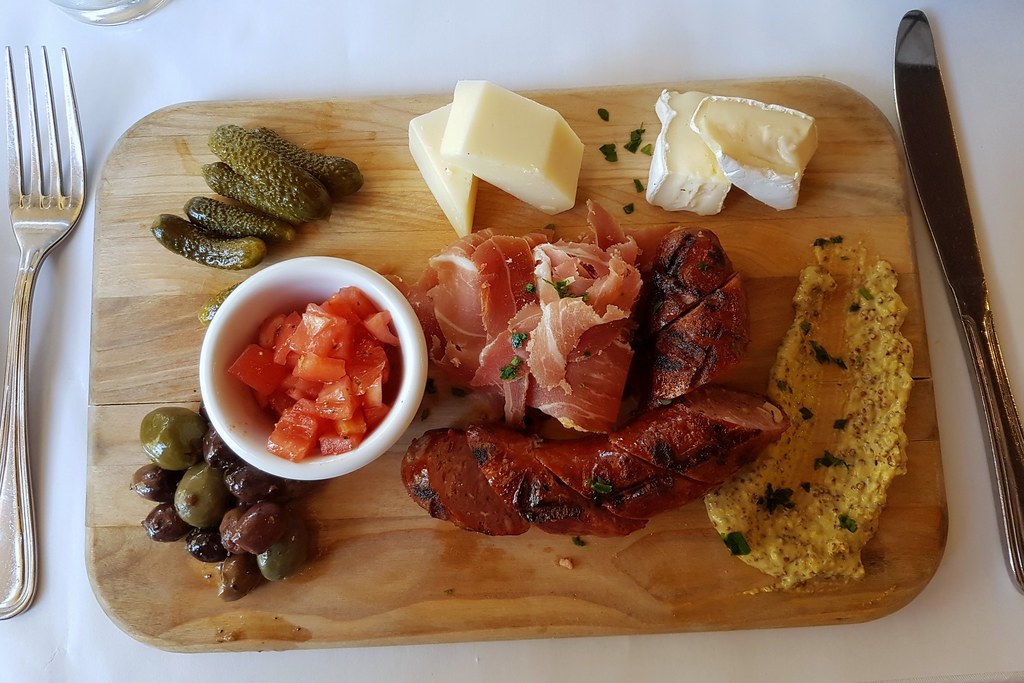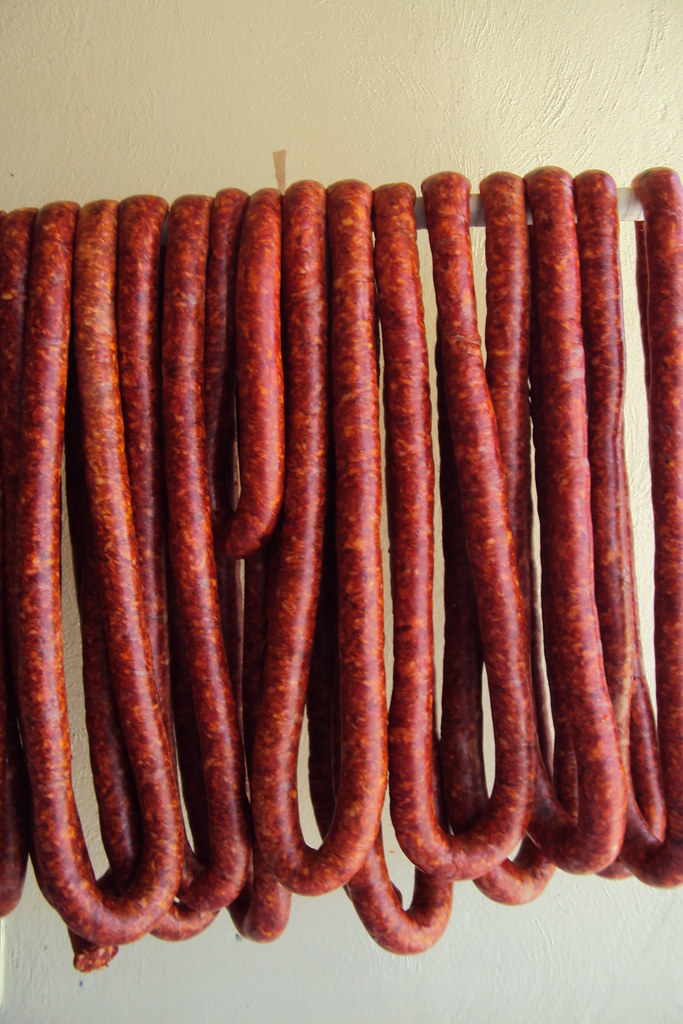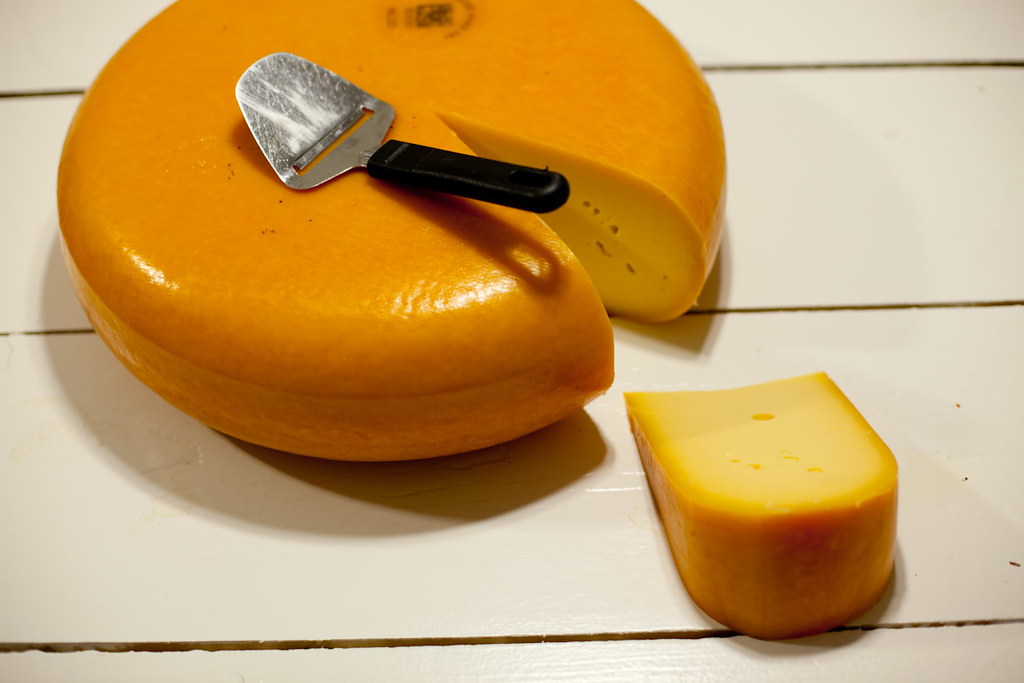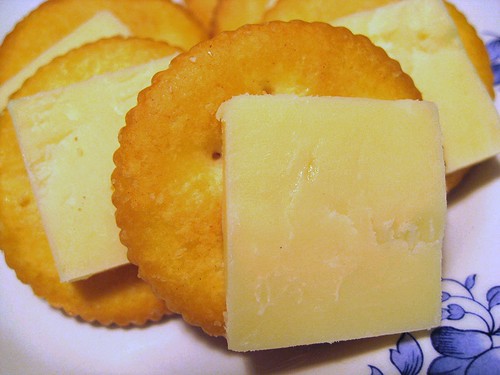
Unique Charcuterie Board Ideas: Elevate Your Next Gathering
I may have been compensated for this post. Please keep in mind that it affects you in no way financially. If an item is being reviewed, I am not obligated to give a positive review and always use my own words. This disclosure is in accordance with the Federal Trade Commission’s 16 CFR, Part 255: Guides Concerning the Use of Endorsements and Testimonials in Advertising. If you would like a review done contact Dannelle at op40k@aol.com
Are you tired of the same old cheese and meat platter at your gatherings? Why not switch it up and create a unique charcuterie board? Charcuterie boards have become increasingly popular over the years and for good reason. They are an easy and elegant way to present a variety of foods to your guests.

But what exactly is a charcuterie board? Traditionally, it includes a selection of cured meats, cheeses, and crackers. However, the possibilities are endless when it comes to creating your own unique board. You can include fruits, nuts, spreads, and even sweets. The key is to balance flavors and textures to create a harmonious and visually appealing display.
Let’s explore some creative and unique charcuterie board ideas that will impress your guests and elevate your hosting game. From seasonal boards to themed boards for holidays and special occasions, we’ve got you covered. Get ready to take your charcuterie game to the next level.
Understanding Charcuterie
If you’re new to the world of charcuterie, it might seem overwhelming at first. But don’t worry, we’ve got you covered. In this section, we’ll cover the history of charcuterie and the different types of charcuterie you can include on your board.
History of Charcuterie
Charcuterie is a French term that refers to the art of preserving meat. It dates back to ancient times when people used salt and smoke to preserve meat. The word “charcuterie” comes from the French words “chair” (flesh) and “cuit” (cooked).

Charcuterie became popular in Europe during the Middle Ages when people needed a way to preserve meat without refrigeration. Charcutiers (meat processors) would use a variety of techniques to preserve meat, including smoking, salting, and drying.
Over time, charcuterie became more than just a way to preserve meat. It became a culinary art form, with different regions of Europe developing their own unique styles and flavors.
Types of Charcuterie
There are many different types of charcuterie, each with its own unique flavor and texture. Here are some of the most common types of charcuterie.
- Salami: Salami is a type of cured sausage that is made from ground meat, salt, and spices. It can be made from pork, beef, or a combination of the two. Salami is often sliced thin and served on a charcuterie board.
Prosciutto: Prosciutto is a type of dry-cured ham that is typically served thinly sliced. It’s made from the hind leg of a pig and is aged for several months. Prosciutto has a delicate, sweet flavor and a silky texture.
Pâté: Pâté is a type of spreadable meat that is made from ground meat, fat, and spices. It can be made from pork, chicken, duck, or liver. Pâté is often served with crackers or bread on a charcuterie board.
Terrine: Terrine is a type of meatloaf that is made from ground meat, vegetables, and spices. It’s typically served cold and sliced thin. Terrine can be made from a variety of meats, including pork, chicken, and beef.

Rillettes: Rillettes are a type of spreadable meat that is made from slow-cooked pork or duck. The meat is shredded and mixed with fat and spices to create a rich, flavorful spread. Rillettes are often served with bread or crackers on a charcuterie board.
By including a variety of different types of charcuterie on your board, you can create a unique and delicious spread that will impress your guests.
Choosing Your Board
When it comes to creating a unique charcuterie board, choosing the right board is crucial. The board you select will not only impact the presentation of your board, but it will also affect the overall experience of your guests. Here are a few things to consider when selecting your board.
Material Considerations
Charcuterie boards can be made from a variety of materials, including wood, slate, marble, and more. Each material has its own unique look and feel, and some materials may be better suited for certain types of food than others.
- Wood: Wooden boards are a classic choice for charcuterie boards. They are versatile, durable, and can be found in a variety of shapes and sizes. However, wood can absorb moisture and odors, so it’s important to properly clean and maintain your board.
Slate: Slate boards are a sleek and modern choice for charcuterie boards. They are non-porous, so they won’t absorb moisture or odors, and they can be easily cleaned with soap and water.
Marble: Marble boards are elegant and sophisticated. They are great for keeping cheese and other dairy products cool, but they can be heavy and difficult to move around.
Size and Shape
The size and shape of your board will depend on the number of guests you are serving and the types of food you plan to include. Here are a few things to keep in mind.
- Size: Your board should be large enough to accommodate all of your food items without feeling overcrowded. A good rule of thumb is to select a board that is at least 12 inches in diameter.
Shape: Charcuterie boards come in a variety of shapes, including round, rectangular, and oval. Consider the shape of your board when arranging your food items to create an aesthetically pleasing display.
By considering the material and size/shape of your board, you can create a unique and visually appealing charcuterie board that will impress your guests.
Selecting the Meats
When it comes to creating a unique charcuterie board, selecting the right meats is crucial. The meats you choose will determine the flavor and texture of your board. Here are some factors to consider when selecting your meats.
Variety of Cured Meats
The key to a great charcuterie board is variety. You want to offer a range of meats with different textures and flavors. Here are some popular cured meats to consider.
- Salami: A classic choice, salami comes in many varieties, including spicy, sweet, and tangy.
- Prosciutto: This Italian ham is thinly sliced and has a delicate flavor.

- Chorizo: This Spanish sausage is spicy and smoky.
- Soppressata: This Italian salami is coarsely ground and has a bold, spicy flavor.
- Coppa: This Italian cured meat is made from pork shoulder and has a rich, nutty flavor.
Consider offering a mix of spicy, sweet, and savory meats to appeal to a variety of tastes.
Quantity and Quality
When selecting your meats, it’s important to consider both quantity and quality. You want to offer enough meat to satisfy your guests, but you also want to make sure you’re offering high-quality meats.
A good rule of thumb is to offer 2-3 ounces of meat per person. Make sure to choose meats that are of good quality and free from any off flavors or odors. Look for meats that are fresh and have been properly stored.
When selecting your meats, don’t be afraid to ask your local butcher for recommendations. They can help you choose the best meats for your charcuterie board and may even offer samples for you to try.
Adding Cheeses
When it comes to creating a unique charcuterie board, the cheeses you choose can make all the difference. Here are some tips for pairing cheeses with meats and selecting different cheese textures to add variety to your board.
Pairing Cheeses with Meats
Pairing the right cheese with the right meat can elevate the flavors of both. Here are some classic pairings to consider.
- Prosciutto and Parmesan: The saltiness of the prosciutto complements the nuttiness of the Parmesan.
- Salami and Gouda: The spicy salami pairs well with the mild, buttery flavor of Gouda.
- Chorizo and Manchego: The smokiness of the chorizo is balanced by the nutty flavor of Manchego.
Of course, these are just suggestions. Feel free to experiment with different combinations to find what works best for you.
Cheese Textures
When selecting cheeses for your charcuterie board, it’s important to consider texture as well as flavor. Here are some different cheese textures to consider and include on your board.
- Soft: Brie, Camembert, and goat cheese are all soft cheeses that pair well with meats and crackers.

- Semi-Soft: Cheddar, Gouda, and Havarti are all semi-soft cheeses that add variety to your board.
- Hard: Parmesan, Manchego, and Asiago are all hard cheeses that can be shaved or grated over meats and crackers.
Including a variety of cheese textures will add interest and depth to your charcuterie board.
Remember, the key to creating a unique charcuterie board is to have fun and experiment with different combinations of meats, cheeses, and accompaniments. With these tips, you’ll be well on your way to creating a board that’s sure to impress your guests.
Incorporating Fruits and Nuts
If you want to add a touch of sweetness and crunchiness to your charcuterie board, then incorporating fruits and nuts is a great idea. Fruits and nuts not only add texture and flavor but also make your board look more colorful and appealing. Here are some ideas on how to incorporate fruits and nuts into your charcuterie board.
Seasonal Fruits
When choosing fruits for your charcuterie board, it’s important to consider what’s in season. Seasonal fruits are not only fresher but also more flavorful and affordable. Here are some seasonal fruits you can add to your board.
| Fruit | Season |
|---|---|
| Apples | Fall |
| Pears | Fall |
| Grapes | Fall |
| Persimmons | Fall |
| Clementines | Winter |
| Pomegranates | Winter |
| Kiwis | Winter |
| Blood oranges | Winter |
| Strawberries | Spring |
| Pineapple | Spring |
| Mangoes | Summer |
| Watermelon | Summer |
| Cherries | Summer |
| Peaches | Summer |
You can arrange the fruits in a circular or linear pattern around the board. You can also cut some of the fruits into bite-sized pieces or leave them whole for a more rustic look.
Types of Nuts
Nuts are a great addition to any charcuterie board. They add a crunchy texture and a nutty flavor that complements the meats and cheeses. Here are some types of nuts you can add to your board.
- Almonds
- Walnuts
- Pecans
- Pistachios
- Cashews
- Hazelnuts
- Macadamia nuts
You can roast the nuts in the oven to enhance their flavor or leave them raw for a more natural taste. You can also mix different types of nuts together for a more varied texture.
Incorporating fruits and nuts into your charcuterie board is a great way to add color, flavor, and texture. By choosing seasonal fruits and different types of nuts, you can create a unique and delicious board that will impress your guests.
Including Breads and Crackers
When it comes to creating a charcuterie board, breads and crackers are essential. They provide a vehicle for your guests to enjoy the various meats, cheeses, and dips on the board. Here are some tips for selecting the perfect breads and crackers for your unique charcuterie board:
Breads
Breads are a great option for dips and spreads. They provide a soft and fluffy base that pairs well with creamy or savory dips. Here are some bread options to consider.
- Baguette: A classic choice for any charcuterie board. It has a crispy crust and a soft center that pairs well with any type of cheese or meat.
- Sourdough: A tangy and chewy bread that pairs well with strong cheeses and salty meats.
- Pita: A soft and fluffy bread that is perfect for hummus or other Mediterranean dips.
- Focaccia: A flat and savory bread that is perfect for dipping in olive oil or balsamic vinegar.
Crackers
Crackers are a great option for cheese and meat. They come in a variety of flavors and textures, making it easy to find the perfect pairing for your board. Here are some cracker options to consider.
- Water Crackers: A plain and simple cracker that pairs well with any type of cheese or meat.

- Ritz Crackers: A buttery and salty cracker that pairs well with creamy cheeses.
- Wheat Thins: A slightly sweet and nutty cracker that pairs well with sharp cheeses.
- Sesame Crackers: A crunchy and savory cracker that pairs well with spicy meats.
When selecting breads and crackers for your charcuterie board, it’s important to consider the flavors and textures of the other items on the board. You want to create a balanced and cohesive experience for your guests. With these tips, you’ll be able to create a unique and delicious charcuterie board that your guests will love.
Presentation Techniques for Unique Charcuterie Board Ideas
When it comes to creating a unique charcuterie board, presentation is key. The way you arrange your meats, cheeses, breads, and accompaniments can make all the difference in how visually appealing and appetizing your board looks. Here are some presentation techniques to consider.
Arrangement Styles
There are several ways to arrange your items on a charcuterie board, depending on your personal preference and the occasion. Here are some popular styles.
- Organic: This style involves arranging items in a natural, flowing pattern, with no set order or structure. This is a great option for a more casual gathering or a rustic-themed event.
Symmetrical: For a more formal or elegant event, a symmetrical arrangement can be visually stunning. This involves arranging items in a balanced, geometric pattern, with similar items on opposite sides of the board.
Layered: A layered arrangement involves stacking items on top of each other, creating height and dimension on the board. This is a great option for showcasing a variety of items in a small space.
Color and Texture Balance
In addition to the arrangement style, it’s important to consider the balance of colors and textures on your charcuterie board.
- Contrast: Contrasting colors and textures can make your board visually striking. For example, pairing a dark, rich cheese with a bright, fresh fruit can create a beautiful contrast.
Complement: While contrast can be visually appealing, complementary colors and textures can create a more cohesive look. For example, pairing a nutty cheese with a nut-based spread can create a harmonious flavor profile.
Balance: It’s important to balance the amount of each item on your board, both in terms of quantity and location. For example, if you have a large amount of one type of cheese, consider spreading it out across the board rather than piling it all in one spot.
By considering these presentation techniques, you can create a unique and visually appealing charcuterie board that is sure to impress your guests.
Pairing with Beverages
When it comes to serving a charcuterie board, the beverages you pair with it can make all the difference. A well-chosen beverage can enhance the flavors of the meats, cheeses, and other accompaniments, creating a truly memorable experience. Here are some suggestions for pairing your charcuterie board with beverages.
Wine Pairings
Wine is a classic choice for pairing with charcuterie, and for good reason. The right wine can complement the flavors of the meats and cheeses while also cleansing the palate between bites. Here are some general guidelines for pairing wine with your charcuterie board.
- Red wines: Choose a full-bodied red wine such as Cabernet Sauvignon or Syrah to pair with stronger flavored meats like salami or prosciutto.
- White wines: Opt for a crisp white wine like Sauvignon Blanc or Pinot Grigio to pair with lighter meats and cheeses like chicken or goat cheese.

- Rosé wines: A dry rosé can be a great choice for pairing with a variety of meats and cheeses, especially if you’re serving your charcuterie board in the summer.
Of course, these are just general guidelines, and there’s no one “right” way to pair wine with your charcuterie board. Experiment with different wines to see what works best for your particular board.
Beer and Other Beverages
While wine is a popular choice, it’s not the only beverage that pairs well with charcuterie. Here are some other options to consider.
- Beer: A light or medium-bodied beer like a pilsner or amber ale can be a great choice for pairing with charcuterie. Look for beers with a slightly bitter finish to complement the saltiness of the meats and cheeses.
- Cider: If you’re looking for something a little different, try pairing your charcuterie board with a dry hard cider. The crisp, refreshing taste can be a great contrast to the rich flavors of the meats and cheeses.
- Cocktails: If you’re feeling adventurous, try pairing your charcuterie board with a cocktail. A classic Negroni or Manhattan can be a great choice, or you could try something more unusual like a gin and tonic with cucumber and mint.
No matter what beverage you choose, the key is to find something that complements the flavors of your charcuterie board without overpowering them. With a little experimentation, you’re sure to find the perfect pairing for your next charcuterie board.
Maintenance and Storage Tips
To keep your charcuterie board in pristine condition, it’s important to properly care for it and store it correctly. Here are some maintenance and storage tips to help keep your board in top shape.
- Clean it properly: After each use, clean your board with warm soapy water and a soft sponge. Avoid using harsh chemicals or abrasive sponges as they can damage the board’s surface. Dry it thoroughly with a clean towel before storing it away.
Oil it regularly: To prevent the board from drying out and cracking, oil it regularly with food-grade mineral oil or beeswax. Apply the oil in a thin, even layer and let it soak in for a few hours before wiping off any excess with a clean cloth.
Store it properly: When not in use, store your board in a cool, dry place away from direct sunlight and heat sources. Avoid storing it in a damp or humid environment as this can cause warping or mold growth.
Use separate boards for different foods: To prevent cross-contamination, use separate boards for different types of food. For example, use one board for meats and another for cheeses and fruits.
Rotate your board: To ensure even wear and tear, rotate your board every few months so that it gets used evenly on all sides.
Replace it when necessary: If your board becomes excessively worn or develops cracks or deep scratches, it’s time to replace it. A damaged board can harbor bacteria and pose a health risk.
By following these maintenance and storage tips, you can extend the life of your charcuterie board and continue to enjoy its beauty and functionality for years to come.

Frequently Asked Questions about Unique Charcuterie Board Ideas
What are some creative additions for a charcuterie board?
Aside from the classic meats and cheeses, there are plenty of creative additions you can include on your charcuterie board. Some ideas include fresh fruits, like grapes, sliced apples, or berries, as well as nuts, olives, pickles, and even chocolate! You can also include spreads, like honey, jam, or mustard, to add some sweetness or spice.
What are some essential items for a well-rounded charcuterie board?
To create a well-rounded charcuterie board, it’s important to include a variety of items. This includes a selection of meats, like salami, prosciutto, and ham, as well as a variety of cheeses, like brie, cheddar, and gouda. You should also include some crackers or bread, as well as fresh fruits and nuts for some added texture and flavor.
What are some unique themes for a food board?
There are plenty of unique themes you can choose from when creating a food board. Some ideas include a Mediterranean board, featuring hummus, tzatziki, and pita bread, or a dessert board, featuring sweets like chocolates, cookies, and fruit. You can also create a board based on a specific color scheme or season, like a red and green Christmas board or a fall-themed board featuring pumpkin and apple flavors.
What are some affordable charcuterie board ideas?
Creating a charcuterie board doesn’t have to be expensive. You can save money by shopping at discount stores or buying in bulk. Some affordable items to include on your board include crackers, nuts, and fresh fruits. You can also choose cheaper cuts of meat and cheese, or opt for store-brand items instead of name-brand.
What is the 3 3 3 3 rule for a well-balanced charcuterie board?
The 3 3 3 3 rule is a helpful guideline for creating a well-balanced charcuterie board. It suggests including 3 types of meat, 3 types of cheese, 3 types of crackers or bread, and 3 types of extras, like fruits, nuts, or spreads. This helps ensure that your board has a good variety of flavors and textures.
What are some common mistakes to avoid when creating a charcuterie board?
One common mistake is overcrowding the board. Make sure there is enough space between items for guests to easily grab what they want. Another mistake is not including enough variety. Make sure to include a range of flavors and textures, and don’t be afraid to try new things.
Finally, make sure to label any items that may contain allergens, like nuts or dairy, to ensure everyone can safely enjoy the board.

